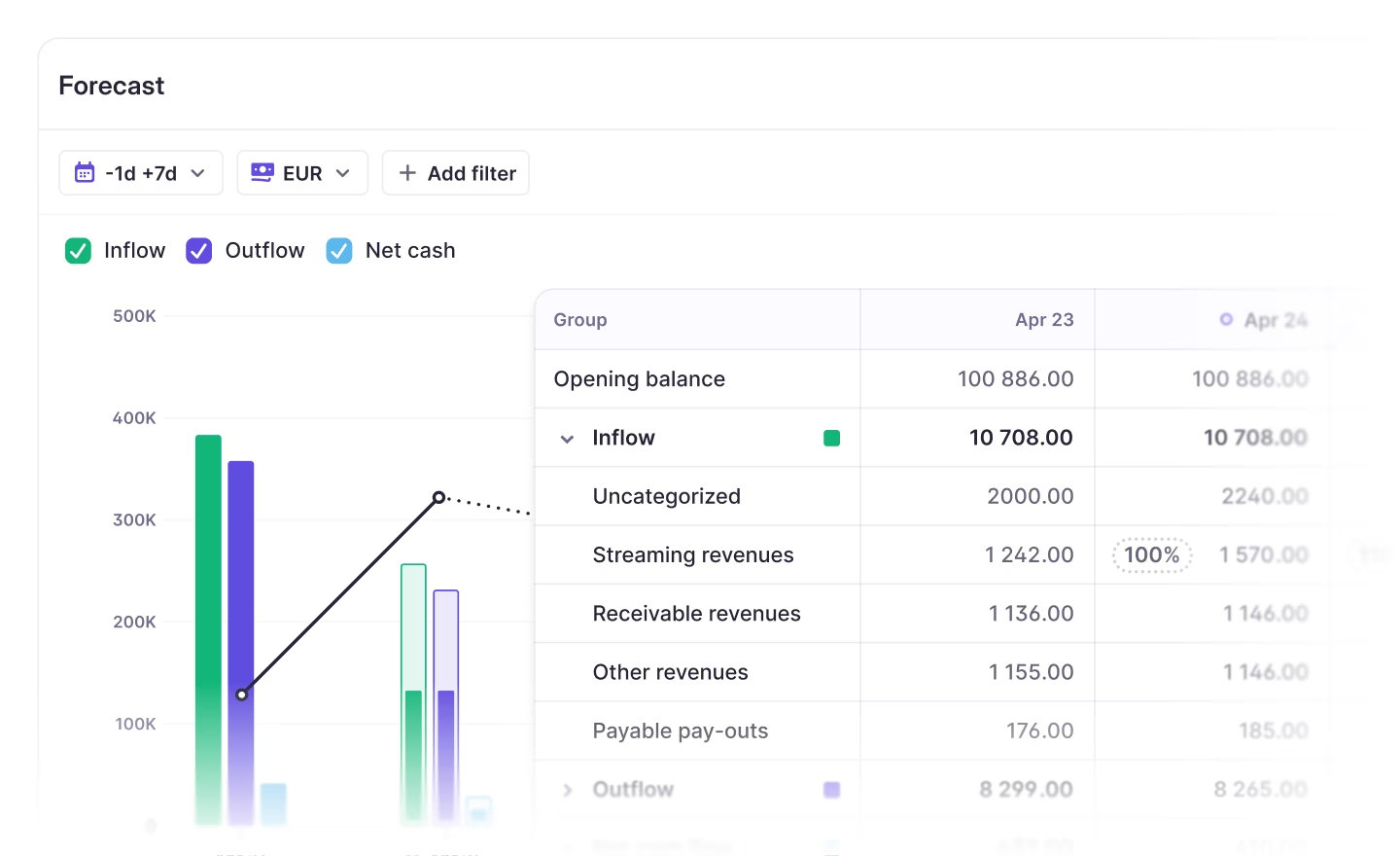What is a rolling cash flow forecast?
Unlike a static cash flow forecast, which only covers a fixed time frame such as a fiscal year, a rolling cash flow forecast continuously extends to ensure that it covers a consistent time horizon (e.g., 12 months or 13 weeks).

A rolling cash flow forecast is a financial tool used to project a business's future cash inflows and outflows over a set period, typically updated on a regular basis (e.g., monthly or weekly). Unlike a static cash flow forecast, which only covers a fixed time frame (e.g., a fiscal year), a rolling cash flow forecast continuously extends by adding new periods as old ones pass, ensuring the forecast always covers a consistent time horizon (e.g., 12 months or 13 weeks).
In the case of 13-week cash flow forecasting, a rolling forecast is considered best practice over a static forecast since it offers greater accuracy and insight into cash inflow and outflow trends over time. This is because it's continuously updated with new data, rather than relying on fixed, unchanging information—though rolling forecasts can require more work in order to collect data on an ongoing basis.

How a rolling forecast works
- Initial forecast creation: Start by forecasting expected cash inflows (e.g., customer payments, interest income) and outflows (e.g., salaries, supplier payments) for a specific time horizon (e.g., 13 weeks).
- Regular updates: As each period concludes, replace the completed period with a new one, ensuring the forecast always projects the same length of time into the future.
- Incorporate actual data: Update the forecast with actual cash flow data from the most recent period, improving accuracy for future periods.
- Adjust for changes: Revise assumptions to reflect new business conditions, trends, or unexpected events.
You can unsubscribe anytime.
Further reading
See Atlar in action.
Enter your work email to watch a live product demo.


